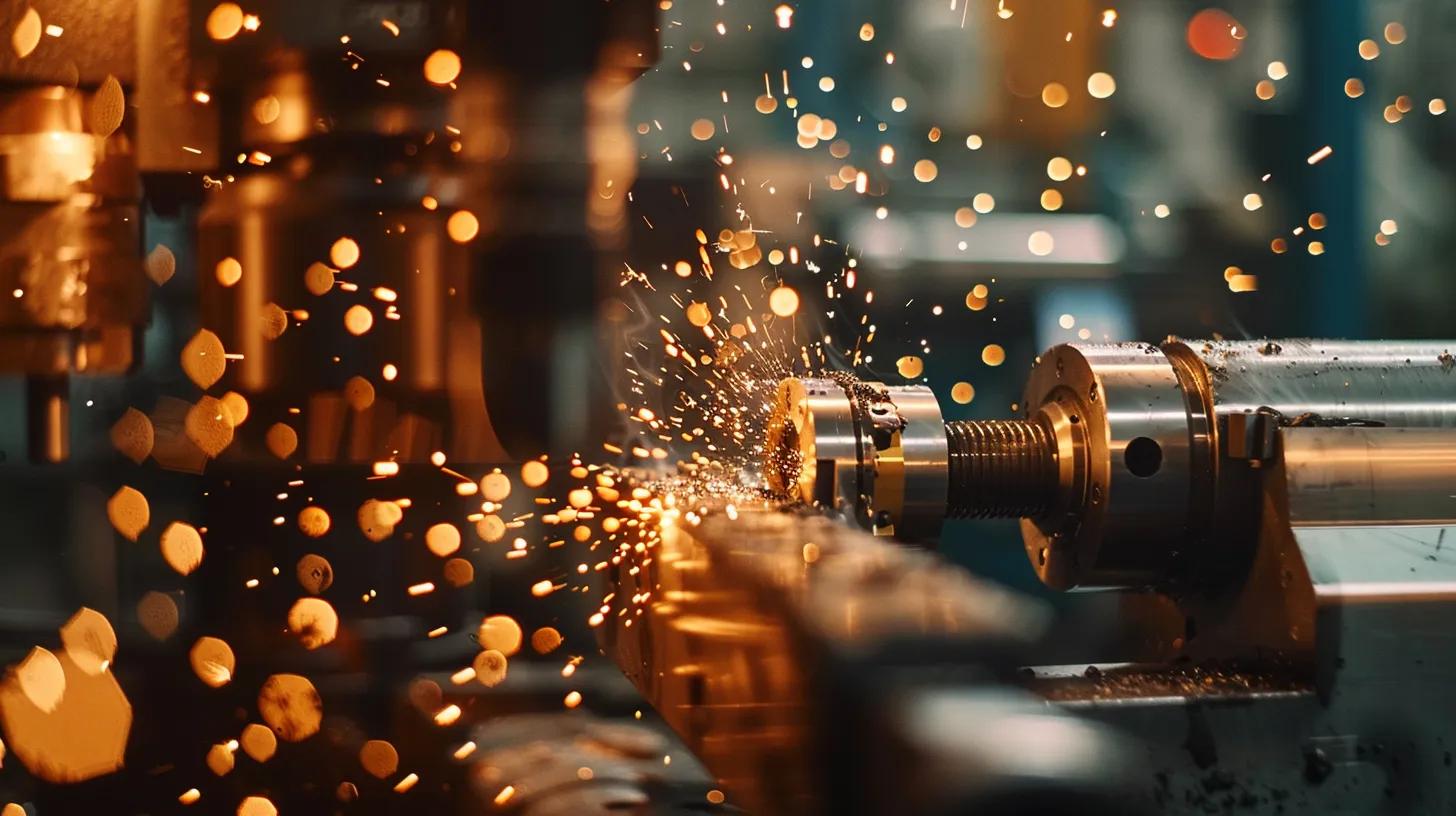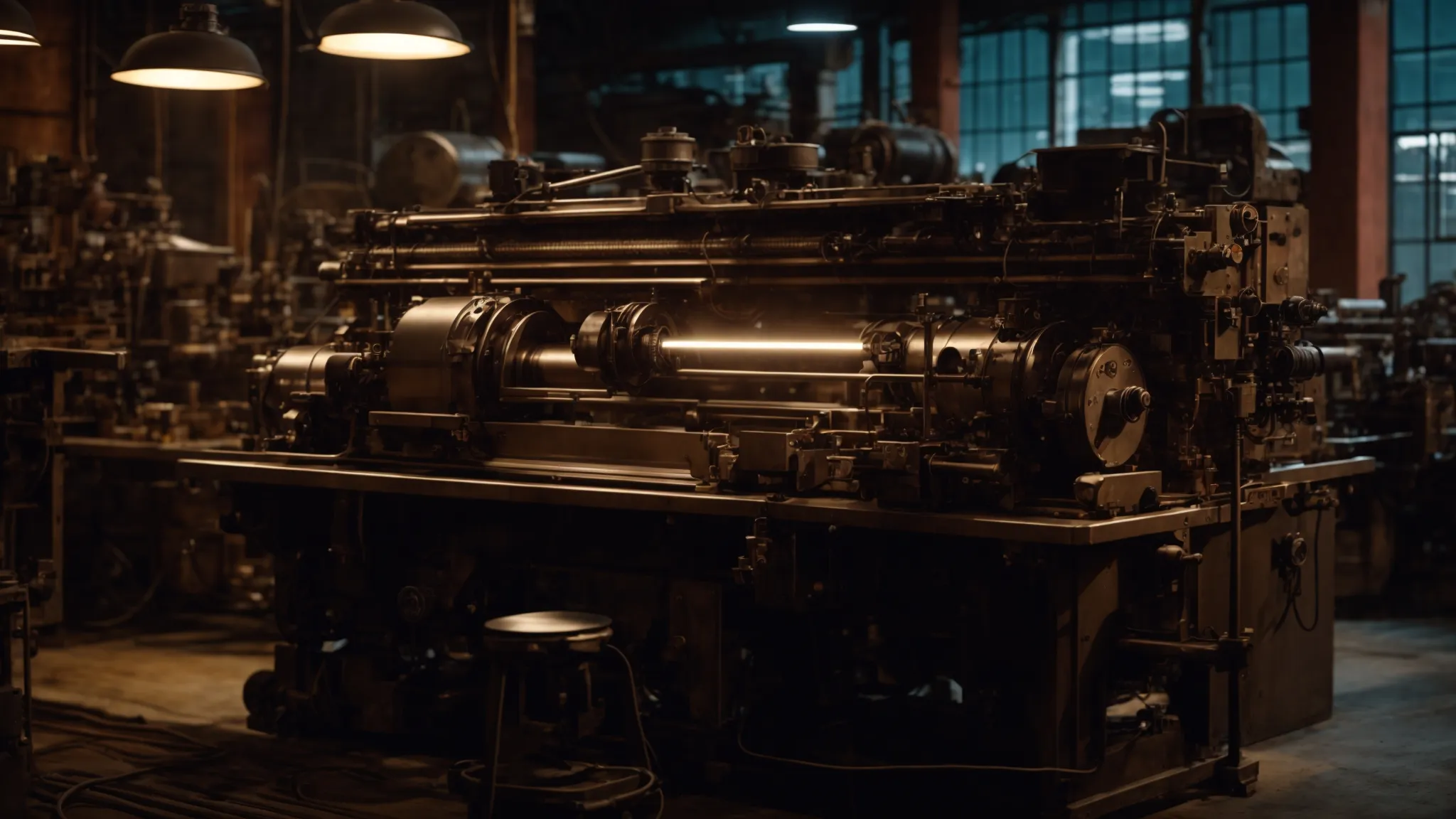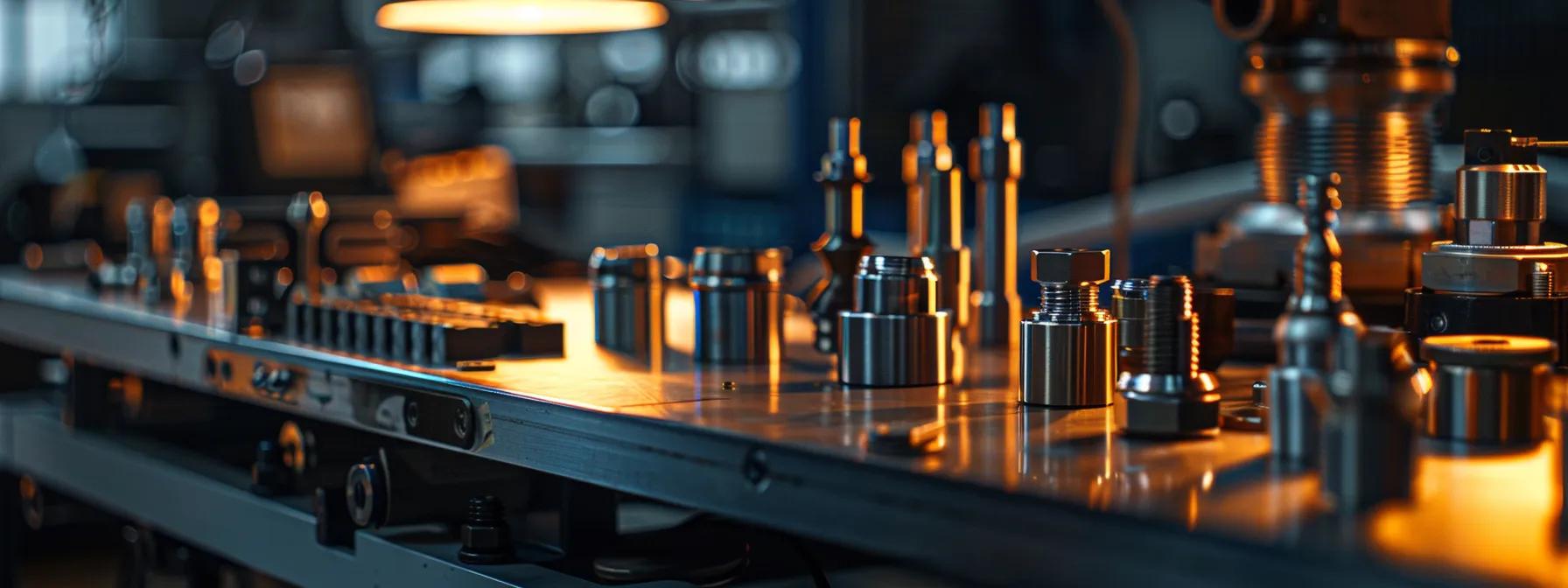Meaning of Machine in English
Key Takeaways
- The article defines a machine as a mechanical or electrical device designed to apply force, control movement, and perform work.
- It traces the term’s etymology from Latin and Old French, noting semantic shifts and Greek influences.
- Different categories of machines, from simple tools to complex automated systems, are classified and explained.
- The article discusses figurative language use of “machine” and outlines the operation principles and energy transformation in machines.
- Insights are provided on machine terminology in fields such as engineering, computer science, and philosophy.
Introduction
A machine is defined as a device engineered to apply force, perform work, or control motion. Machines range from simple mechanical devices to complex automated systems. This article explains the core definition of machines, explores the history of the word “machine,” classifies various types, and examines its figurative use and operation. Readers gain an understanding of how machines work and their influence across multiple fields.
Grasping the Core Definition of a Machine
A machine is fundamentally a mechanical or electrical device that transforms energy into work. It takes an input, such as power or force, and converts it into motion or a controlled action. In contrast to a simple tool that requires manual force, a machine multiplies or transforms energy through components like levers, gears, and engines, enabling tasks that would be too arduous or impossible by human effort alone. This synergy of parts—like a transmission or pump—serves critical roles in industrial and technological contexts.
Understanding a Machine as a Mechanical or Electrical Device
Machines can be purely mechanical, purely electrical, or a hybrid. Mechanical machines use components such as gears, levers, and pulleys to create movement. For example, a wheel and axle or gearbox in a vehicle relies on mechanical principles. Electrical machines, such as automated teller machines or washing machines, use electricity converted into motion. Modern devices, including computers and aircraft, often combine both traits, highlighting the versatility of machines.
Identifying the Purpose of a Machine to Apply Force or Control Movement
The primary purpose of a machine is to exert force or control movement. Whether through a lever lifting a load directly or a turbine converting wind energy into rotational motion, machines make it possible to handle tasks requiring precision and power. This controlled movement is crucial in applications ranging from transportation engines to industrial robots, where precision and efficiency are essential.
Recognizing a Machine’s Role in Performing Work
Machines enable work by applying force over a distance, as defined in physics. For instance, an internal combustion engine converts fuel energy into mechanical work to power vehicles. Beyond motion, machines boost productivity and efficiency by managing energy conversion processes that enhance human capability and reduce labor intensity.
Differentiating a Machine From Simple Tools
While simple tools like hammers assist with tasks using direct human force, machines incorporate internal mechanisms that amplify energy. A sewing machine, for example, converts electrical energy into rhythmic motion to sew fabric automatically—a stark contrast to the manual operation of a hand needle. This energy transformation capability has revolutionized manufacturing and everyday tasks.
Acknowledging the Components of a Machine System
A machine is a system made up of interdependent parts, from basic pulleys and levers to advanced components like pistons and sensors. Each part performs a specific role, ensuring overall efficiency and reliability. This systematic integration distinguishes complex systems, such as automobile engines or CNC machines, from mere collections of parts, allowing precise performance and adaptability in various engineering fields.
Tracing the Etymological Journey of the Word “Machine”
The word “machine” has evolved over time while retaining its association with devices that perform work. Its journey through languages reflects both literal and figurative developments.
Locating the Latin Origins of “Machine”
“Machine” comes from the Latin word “machina,” meaning a device designed to achieve a particular effect. This origin highlights early attempts to amplify human force through constructed means, marking the beginning of using devices to extend human capability.
Following “Machine” Through Old French Into English
As Latin evolved into Old French, “machina” became “machine.” When adopted into English, the term carried connotations of a constructed apparatus capable of altering energy and movement. Medieval texts document its use in architecture and warfare, reflecting an evolution from rudimentary tools to more complex mechanisms that paved the way for industrial applications.
Observing Semantic Shifts in the “Machine” Term Over Time
Over the centuries, “machine” expanded to include not just physical devices but also entire systems and organizations. Modern usage covers industrial systems, computer algorithms, and even metaphorical processes in government or sports. For example, “machine learning” combines both hardware aspects and abstract algorithmic functions.
Noting Greek Influences on the “Machine” Concept
Greek influences appear in related terms such as “mechanics” and “machinery.” These words emphasize motion, force, and structure, linking the concept of a machine to fundamental physical principles like momentum and energy conversion.
Classifying Various Types of Machines
Machines are classified based on complexity and operational mechanisms, helping us understand their wide range of applications from simple tools to advanced systems.
Defining Simple Machines and Their Basic Functions
Simple machines, which include levers, wheels and axles, pulleys, inclined planes, wedges, and screws, provide basic mechanical advantages. Each device is designed to reduce the necessary input force—for instance, a lever uses a fulcrum to multiply force. These simple concepts form the basis of many mechanical operations taught in basic physics.
Characterizing Complex Machines as Combinations of Simpler Devices
Complex machines consist of several simple machines working together. An automobile engine, for example, integrates levers, pulleys, and gears to convert chemical energy into controlled mechanical work. This combination allows for enhanced functionality and efficiency, a hallmark of innovations during the industrial revolution.
Identifying Engines as a Specific Machine Category
Engines are specialized machines that convert various forms of energy—whether through combustion, electrical stimulation, or other means—into mechanical work. Both internal combustion and steam engines serve as prime examples, powering vehicles and industrial systems with measurable efficiency and reliability.
Recognizing Computing Machines and Their Operations
Computing machines, from early mechanical calculators to modern digital computers, operate based on programmed instructions known as machine code. These devices are critical in processing data and powering modern information systems, highlighting their role in driving advances in technology and artificial intelligence.
Understanding Automated Systems as Advanced Machines
Automated systems represent the evolution of machines into self-regulating entities. They rely on sensors, actuators, and control algorithms to operate without constant human intervention. Automated systems, such as robotic assembly lines, increase precision and safety while boosting efficiency in manufacturing and other industries.
Observing “Machine” in Figurative Language and Extended Contexts
Beyond physical devices, “machine” is used figuratively to describe efficient, systematic organizations and behaviors.
Interpreting “Machine” as an Efficient Organization or System
Metaphorically, a “machine” can describe an organization that runs smoothly—often called a “well-oiled machine”—emphasizing order, consistency, and precision in its operations.
Understanding a Person Described as a “Machine”
When a person is labeled a “machine,” it denotes exceptional productivity and relentless energy. In sports or business, this analogy praises someone for their persistent and efficient performance, likening their work to the mechanical reliability of a finely tuned apparatus.
Seeing “Machine” as a Controlling Political or Social Structure
In political and social contexts, “machine” refers to structured entities that organize and control processes. Political machines, for instance, are known for their highly organized, if sometimes corrupt, methods of mobilizing resources and influencing decision-making.
Recognizing the “Machinery” of Government or Business
“Machinery” in bureaucratic or corporate settings points to interconnected processes and systems that operate predictably, maintaining order and efficiency even in large organizations.
How “Machine-Like” Describes Repetitive or Unfeeling Actions
The term “machine-like” often characterizes repetitive, impersonal actions. This comparison can highlight efficiency in routine tasks while also critiquing a lack of human warmth or creativity.
Understanding the Function and Operation of a Machine
The effective operation of a machine depends on its ability to convert energy into work through defined stages governed by principles of thermodynamics and mechanics.
How a Machine Utilizes Energy to Perform Tasks
Machines use various forms of energy—thermal, electrical, chemical, or mechanical—and convert it into movement. In an internal combustion engine, for example, fuel energy is ignited to create motion, demonstrating the conversion process essential to a machine’s design.
The Input, Process, and Output Stages in Machine Operation
Most machines operate in three steps: receiving an energy input (like fuel or electricity), processing that energy via internal mechanisms (such as gears or pistons), and delivering an output (such as motion or a finished product). This structured process optimizes efficiency and design.
Common Power Sources for Various Machines
Machines rely on diverse power sources. Fossil fuels power internal combustion engines, while electricity drives many household and industrial devices. Increasingly, renewable sources like wind and solar energy are being used to power modern machines in a sustainable manner.
Basic Principles Governing Machine Mechanics
Machine mechanics are based on fundamental principles including Newton’s laws, energy conservation, and friction dynamics. These principles ensure that forces within a machine are managed effectively to produce desired movement and stability, a key factor in innovative design and troubleshooting.
The Word “Machine” in Different Fields of Study
“Machine” carries varied meanings across disciplines, from tangible physical systems to abstract computational models.
“Machine” Terminology in Engineering and Physics
In engineering and physics, “machine” describes devices that combine measurable forces and energy transformations. Discussions often focus on gear ratios, torque, and efficiency using strict mathematical definitions.
The Concept of a “Machine” in Computer Science
In computer science, a machine refers to a device capable of executing programmed instructions. The Turing machine serves as a theoretical foundation, while modern computing devices exemplify precision and speed in data processing.
“Machine” References in Philosophical Discussions
Philosophically, machines raise discussions on determinism and free will. The machine metaphor is used to analyze societal control systems, examining how efficiency can sometimes reduce human individuality.
Literary Portrayals of Machines and Their Significance
In literature, machines often symbolize progress, dehumanization, and the complex interplay between technology and individuality. Authors critique industrial society by invoking machine imagery to explore themes of automation and control.
Table: Machine Classifications and Key Attributes
Before reviewing the next section, consider this table that summarizes key classifications of machines alongside their primary attributes and benefits.
| Classification | Key Attribute | Primary Benefit | Example |
|---|---|---|---|
| Simple Machines | Basic mechanical advantage | Reduced input force for work | Lever, pulley |
| Complex Machines | Integration of simple machines | Enhanced functionality and efficiency | Automobile engine |
| Engines | Energy conversion | Power generation and motion control | Internal combustion engine |
| Computing Machines | Data processing and automation | High-speed problem solving | Digital computer |
| Automated Systems | Self-regulating operations | Precision and minimal human oversight | Robotic assembly line |
This table highlights the fundamental distinctions among various machine types.
Final Thoughts
In summary, this article defines a machine as any device designed to apply force, control movement, and perform work. It has traced the historical evolution of the term from Latin and Old French roots to its modern usage across diverse fields such as engineering, computer science, and philosophy. The classifications discussed—from simple machines to complex automated systems—illustrate the profound impact machines have on industry and daily life. Understanding these devices and their operations is crucial for appreciating their role in technological advancement and productivity.
Frequently Asked Questions
Q: What is the core definition of a machine?
A: A machine is a mechanical or electrical device designed to apply force or control movement, performing work through energy transformation.
Q: How did the term “machine” evolve over time?
A: It has Latin origins in “machina,” passed through Old French, and has evolved semantically with Greek influences into its modern technical definitions.
Q: What distinguishes a complex machine from a simple machine?
A: Complex machines integrate several simple machines to enhance functionality, whereas simple machines rely on basic mechanical advantages.
Q: How is the term “machine” used figuratively?
A: It describes efficient, organized systems or people, and is often applied to political structures or repetitive, unfeeling actions.
Q: What are common power sources for machines?
A: Machines use fossil fuels, electricity, and renewable energies like wind and solar—each selected based on specific tasks and desired efficiency.



